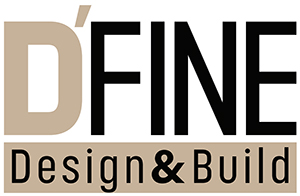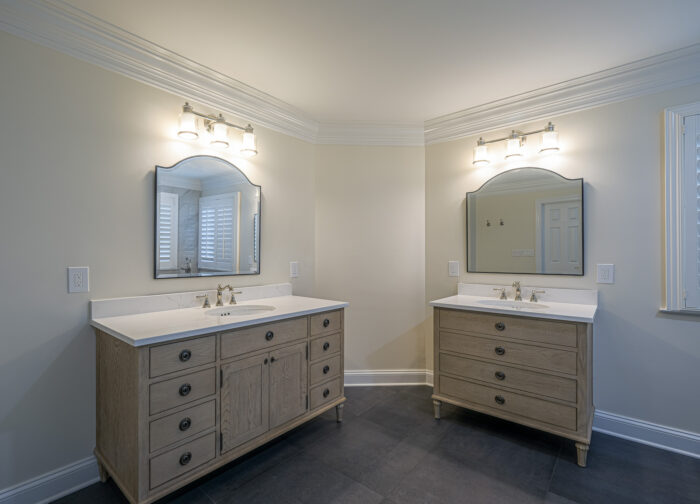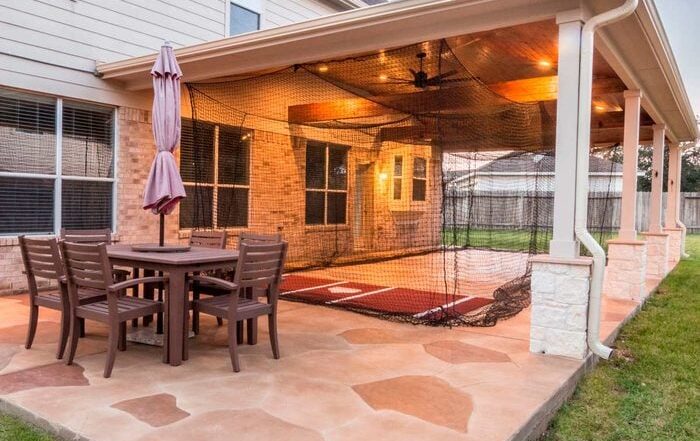Are you considering a kitchen remodel but feeling overwhelmed by the potential cost? In this comprehensive guide, we’ll break down the expenses involved in remodeling your kitchen, from appliances to labor.
Whether you’re planning a small, medium, or large remodel, we’ll provide cost breakdowns for each type. We’ll explore how location and various factors can affect the overall cost. By the end of this article, you’ll have a clear understanding of what to expect when budgeting for your kitchen remodel.
Kitchen Remodel Cost Breakdown
When considering a kitchen remodel, it’s crucial to understand the comprehensive breakdown of costs associated with the project, covering everything from appliances and countertops to the labor and installation processes.
Appliances are a significant consideration in the budget, with costs varying depending on the brand, features, and energy efficiency. Popular choices such as stainless steel refrigerators and gas ranges may have higher price points compared to standard models.
The selection of countertops is another crucial expense, ranging from granite and quartz to laminate options, each with their respective costs based on quality and size requirement. The overall budget would also encompass expenses for cabinetry, flooring, lighting fixtures, and plumbing fittings, all of which contribute to the comprehensive estimate of the project. It’s essential to factor in the costs of professional installation and potential permit fees to ensure a thorough evaluation of the remodel’s financial implications.
Appliances
The selection and installation of new appliances constitute a significant portion of the overall kitchen remodel cost, with considerations for the available kitchen space and the specific remodel type being undertaken.
When selecting new appliances, it’s essential to factor in the costs of both purchasing and installing the kitchen appliances. The expenditures for appliances can vary widely depending on the brands, features, and sizes chosen.
Installation requirements often involve complexities, especially if the space needs to be reconfigured. For instance, if a new refrigerator with ice-maker and water line features is desired, the plumbing services may need to be adjusted and upgraded, contributing to the overall expenses.
Cabinets
Cabinets play a pivotal role in a kitchen remodel, influencing both the aesthetics and functionality of the space, with factors such as storage capacity and the need for demolition and electrical work impacting the total project cost.
When considering the costs of cabinets, it’s essential to account for the materials, design, and craftsmanship involved. The type of wood, finishes, and hardware all contribute to the overall expense.
The storage capacity required for specific kitchen items should be a major consideration when selecting the cabinet layout. Demolition costs may arise if existing cabinets need removal, and potential electrical work might be necessary for lighting fixtures or appliance placements.
Countertops
The choice of countertops in a kitchen remodel carries significant cost implications, especially when considering high-end options, making it a crucial aspect to evaluate for complete remodels.
High-end countertop materials such as marble, granite, and quartz can substantially impact the overall budget of a kitchen remodel. These luxurious options not only require a higher initial investment, but also often necessitate professional installation, further adding to the expense.
The upscale appeal and durability they bring to the kitchen can significantly enhance the aesthetic and resale value of the entire living space, making them a coveted element in complete renovation projects.
Flooring
The flooring component of a kitchen remodel can significantly contribute to the overall project costs, with considerations for existing appliances and potential demolition and electrical work being integral factors in cost assessment.
When embarking on a kitchen remodel, it’s crucial to account for the impact of flooring choices on the budget. The price range for flooring materials varies widely, depending on whether you opt for hardwood, tile, laminate, or stone.
If the new flooring requires changes to the electrical or plumbing systems, the overall project costs can escalate. Existing appliances may need to be temporarily removed and reinstalled, adding to the renovation expenses.
Lighting and Electrical
The lighting and electrical components of a kitchen remodel represent crucial cost factors, encompassing the expenses related to lighting fixtures, new sink faucets, and potential electrical and plumbing services.
When considering lighting fixtures, homeowners should account for the cost of the fixtures themselves, as well as installation expenses. High-quality, energy-efficient options may come with a higher initial price tag but can result in long-term cost savings.
Similarly, new sink faucets range in price depending on the style, material, and additional features. Potential electrical and plumbing services, such as rewiring or upgrading, play a significant role in the overall budget. It’s important to consult with professionals to assess the scope of work and associated costs.
Backsplash
The installation of a backsplash in a kitchen remodel comes with its own cost considerations, including expenses related to installation labor and potential price breaks depending on the complexity of the design and installation process.
When determining the total cost of a backsplash installation, it’s essential to consider the materials and square footage. Popular options include tiles, glass, or stainless steel. The more intricate the design, the higher the labor costs may be. This is especially true if specialized skills or tools are required.
Many homeowners find that incorporating a backsplash into their kitchen remodel adds visual appeal and practical benefits. Not only does it create a focal point, but it also protects walls from splashes and stains. It’s a worthwhile investment for both aesthetic and functional purposes.
Walls and Ceilings
Modifications to walls and ceilings during a kitchen remodel come with distinct cost implications, particularly when considering demolition and potential electrical work, highlighting the differences between renovation and remodeling projects.
When planning a kitchen remodel, it’s crucial to carefully assess the costs associated with wall and ceiling modifications. Demolition expenses can vary depending on the extent of the changes, such as removing walls or creating open-concept layouts.
Additionally, electrical work adds another layer of expenditure, especially if it involves rewiring or installing new lighting fixtures. It’s essential to differentiate between renovation, which involves minor cosmetic updates, and remodeling, which entails more extensive structural changes, as this impacts cost estimates significantly.
Faucets and Plumbing
The selection and installation of faucets and plumbing fixtures represent significant cost components in a kitchen remodel, with considerations for the type of sink faucet and the need for electrical and plumbing services influencing overall project costs.
Regarding selecting the type of sink faucet, homeowners may choose from a range of options, including standard, pull-down, pull-out, or touchless faucets.
Factors such as material, finish, and special features, like filtration systems or sprayers, can influence the overall cost of the chosen fixture.
The need for electrical and plumbing services to accommodate new or relocated fixtures adds another layer of expense to the project.
This encompasses potential requirements for rewiring, installing new outlets, or adjusting plumbing lines to ensure compatibility with the selected fixtures.
Labor
The labor costs for a kitchen remodel encompass a wide range of activities, with considerations for potential price breaks and the necessity for demolition and electrical work shaping the overall labor expenses.
Factors such as the size of the kitchen, the complexity of the design, and the materials chosen can all impact labor costs. Skilled labor, such as plumbers and electricians, may require higher hourly rates, further influencing the overall budget.
The need for specialized skills, like installing custom cabinetry or intricate tiling work, can also contribute to the labor expenses of a kitchen remodel. The extent of demolition needed, such as removing existing cabinets, countertops, and flooring, can significantly affect the overall labor costs. Electrical work, including rewiring and installing new fixtures and appliances, requires skilled labor and can represent a notable portion of the labor expenses.
Kitchen Remodel Cost by Type
Credits: Dfinedesignandbuild.Com – Matthew Jackson
The cost of a kitchen remodel varies significantly based on the specific type or scale of the project, with the expenses differing for small, medium, and large-scale remodels, influencing the total project cost accordingly.
For small-scale kitchen remodels, homeowners typically focus on minor updates such as cabinet refacing, countertop replacement, or installing new appliances. The average cost for these projects ranges from $5,000 to $15,000.
Medium-scale remodels involve more extensive changes, such as reconfiguring the layout, upgrading to high-end appliances, and custom cabinetry. These projects typically cost between $15,000 to $50,000.
Large-scale projects often encompass a complete overhaul, including structural modifications, luxury finishes, and top-of-the-line appliances. These projects can cost well over $50,000 and reach into the six-figure range.
Small Kitchen Remodel
Small kitchen remodel projects come with their own set of cost considerations, often focusing on optimizing space with adequate storage solutions, and aligning with industry standards defined by the National Kitchen Bath Association.
When planning a small kitchen remodel, it’s crucial to factor in the various expenses involved. These may include the cost of materials, appliances, labor, and permits.
Optimizing space is key, and incorporating custom cabinets, pull-out organizers, and vertical storage options can substantially impact the overall budget. Ensuring adequate storage solutions not only enhances functionality but also adds value to the space, aligning with the standards set by industry experts. Adhering to the guidelines provided by the National Kitchen Bath Association can contribute to a successful remodel that meets high standards of quality and practicality.
Medium Kitchen Remodel
Medium-scale kitchen remodels present their own cost dynamics, balancing the scope of the project with industry standards outlined by the National Kitchen Bath Association, shaping the total project cost accordingly.
When contemplating a medium-scale kitchen remodel, it’s essential to consider the intricacies that influence the overall expenditure. An average project of this size often encompasses the cost of materials, labor, design, and installation.
According to industry data, the average cost of such a remodel falls within a range depending on the specific design preferences and the extent of structural changes required. Therefore, it’s crucial to weigh these factors against the budget and select options that optimize the value of the investment.
Large Kitchen Remodel
Large-scale kitchen remodels encompass substantial cost factors, often tied to the potential benefits of renovating the resale value of the property, with the possibility of complimentary consultation services influencing the overall project costs.
Undertaking a significant renovation involves considering various expenses, such as materials, labor, and potential structural changes. These costs can quickly escalate, especially if high-end appliances or custom cabinetry are desired. However, despite the substantial initial investment, a well-executed kitchen remodel can significantly increase a property’s resale value and appeal to potential buyers.
For homeowners looking to minimize costs, seeking out complimentary consultation services from reputable contractors or design firms can help navigate the complexities and make informed decisions. This can potentially impact the overall project costs and ensure a successful kitchen renovation.
Kitchen Remodeling Cost by Location
Credits: Dfinedesignandbuild.Com – Austin Nelson
The location of a kitchen remodel project can influence the overall cost, with regional variations and different project scopes and requirements leading to distinctions in expenses and the utilization of electrical and plumbing services.
Regional variations play a significant role in the cost dynamics of a kitchen remodel. Urban areas often have higher labor and material costs compared to rural locations. In addition, the availability of skilled professionals may differ from one region to another, impacting the overall expenses.
Project scopes and requirements differ based on geographical locations. For instance, coastal regions may require specialized materials and designs to withstand moisture and salt exposure, leading to unique cost considerations.
The utilization of electrical and plumbing services is influenced by the location. Retro fitting older homes in historical districts may involve additional complexities and costs compared to modern urban areas with updated infrastructures. These aspects must be carefully evaluated when estimating the expenses of a kitchen remodel project.
Factors That Affect Kitchen Remodel Costs
Several key factors can significantly impact the costs associated with a kitchen remodel, including considerations for property resale value, the requirements for demolition and electrical work, and the presence of old appliances that may require upgrades or replacements.
When evaluating the cost of a kitchen remodel, property resale value becomes a critical factor. This is because the design choices made during the remodel can significantly affect the overall value of the property.
The extent of demolition and electrical work needed can greatly impact the budget, especially in older homes. This is because wiring and structural adjustments may be required. Additionally, the presence of old, outdated appliances may call for upgrades or replacements, which can add to the overall expenses.
Renovation vs. Remodeling
Distinguishing between renovation and remodeling projects in the context of a kitchen can shape the cost dynamics, with considerations for the extent of the project and the utilization of electrical and plumbing services playing key roles in cost assessment.
Renovation primarily involves restoring an existing kitchen space, focusing on surface-level improvements such as painting, wallpapering, and minor repairs. This often requires minimal changes to the layout and structure, resulting in lower costs compared to remodeling.
Remodeling, on the other hand, involves a more extensive transformation, including structural changes, layout modifications, and the installation of new fixtures and appliances. This typically demands substantial electrical and plumbing work, contributing to higher project costs and timelines.
Size
The size of the kitchen undergoing renovation or remodeling is a significant cost influencer, with considerations for available space, the scope of the remodel, and potential requirements for demolition and electrical work shaping the overall project costs.
Regarding kitchen renovations, the available space is a major factor influencing the project’s cost. Larger kitchens often require more materials, such as flooring, cabinetry, and countertops, which can significantly increase the overall expense.
The scope of the remodel, whether it involves a complete overhaul or minor updates, plays a crucial role in determining the final cost. Demolition and electrical work are also cost considerations; extensive demolition or rewiring can add substantial expenses to the project.
Permits
Acquiring the necessary permits for a kitchen remodel project introduces specific cost considerations, especially when factoring in the regulatory requirements related to different types of remodeling projects and the timeline of permit acquisition.
Regulatory requirements can significantly impact the cost of acquiring permits, as certain projects may require more extensive documentation and inspections. It’s essential to budget for fees related to application processing, plan review, and inspection costs.
Project-specific considerations, such as the scope and scale of the remodel, also influence permit costs. The complexity of the project and whether structural changes are involved can affect the fees imposed by regulatory bodies.
The timeline for permit acquisition should be factored into the overall project schedule and budget. Delays in obtaining permits can lead to project setbacks and additional expenses.
Repairs
The need for repairs and the potential relocation of appliances during a kitchen remodel can introduce additional costs, particularly when addressing issues related to old appliances and considering the logistics of moving existing fixtures within the space.
Old appliances may require updates or repairs to fit seamlessly into the new design, contributing to the overall expenditure.
Relocating fixtures such as sinks or ovens involves labor costs, potential modifications to plumbing or electrical systems, and the need for professional installation services.
An appliance relocation strategy must also account for potential modifications to cabinetry or countertops, further impacting the budget.
Careful planning and consultation with a professional contractor can help anticipate and manage these costs effectively.
Frequently Asked Questions
What is the average cost of a kitchen remodel?
The average cost of a kitchen remodel can vary greatly depending on the scope of the project and the materials used. However, on average, homeowners can expect to spend between $12,000 and $35,000 for a basic kitchen remodel.
What factors can affect the cost of a kitchen remodel?
The cost of a kitchen remodel is influenced by a number of factors, including the size of the kitchen, the quality of materials used, the complexity of the design, and the location of the home. Other factors such as labor costs, permits, and unexpected issues can also impact the overall cost.
How can I save money on my kitchen remodel?
There are several ways to save money on a kitchen remodel. Consider keeping the layout of your kitchen the same to avoid costly plumbing and electrical work. You can also opt for budget-friendly materials and appliances, or consider doing some of the work yourself to save on labor costs.
How can I create a budget for my kitchen remodel?
To create a budget for your kitchen remodel, start by determining your overall budget and then prioritize your must-haves versus your nice-to-haves. Research the cost of materials and labor in your area, and leave some wiggle room for unexpected expenses.
What should I look for in a contractor for my kitchen remodel?
When choosing a contractor for your kitchen remodel, make sure they are licensed, insured, and have experience with similar projects. It’s also important to get multiple quotes, check references, and ask for a detailed contract outlining the scope of work and payment schedule.
How can I avoid overspending on my kitchen remodel?
To avoid overspending on your kitchen remodel, stick to your budget and avoid making changes or additions once the project has started. Carefully consider which upgrades are necessary and which ones are simply nice-to-haves, and be prepared for unexpected costs by having a contingency fund.
Timonium, MD Showroom
Location
D’Fine Design and Build
2135 York Rd, Suite C
Timonium, MD 21093
Opening Hours
Monday to Friday: 9am – 5pm
Saturday: 10am – 5pm
Sunday: Closed
Sales & Order Enquiries
(410) 616-9949
[email protected]






